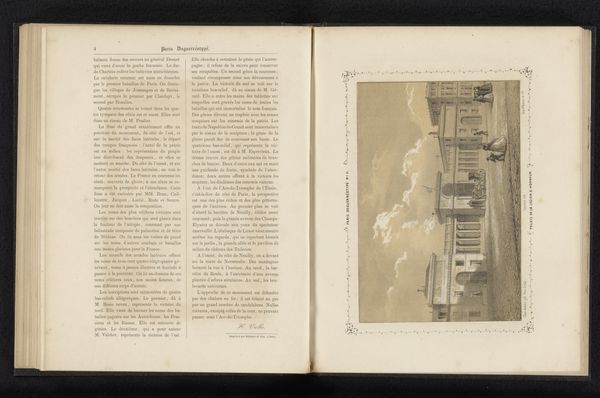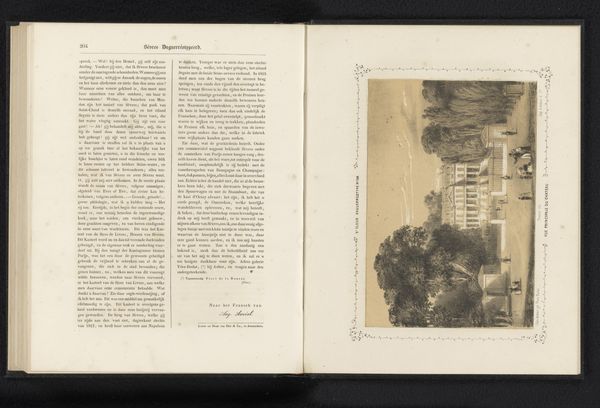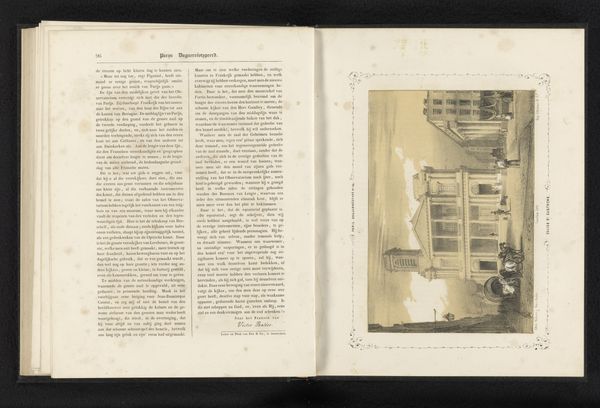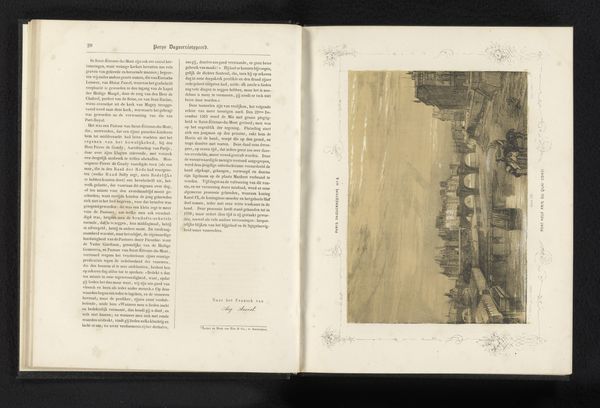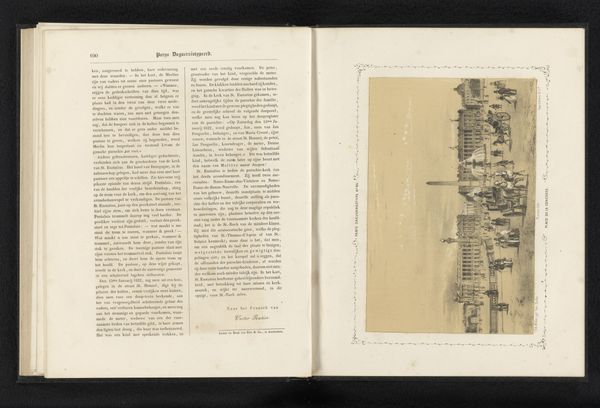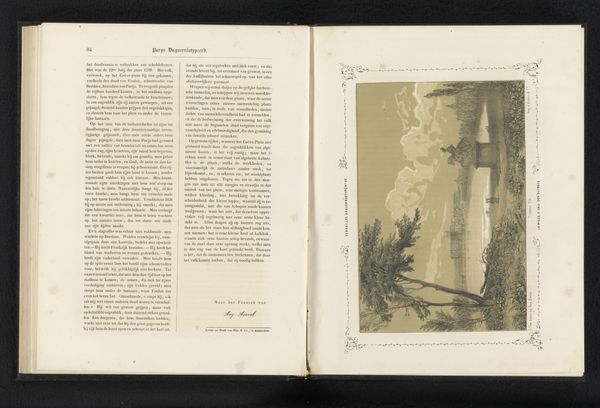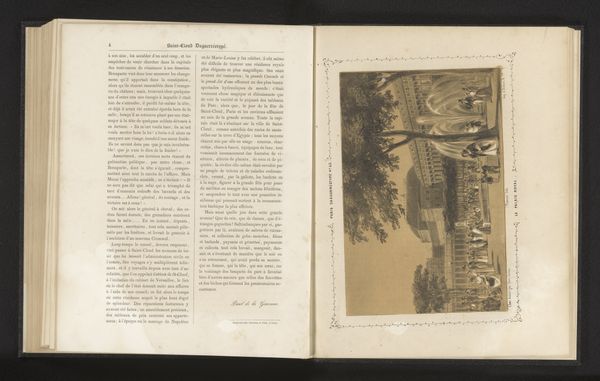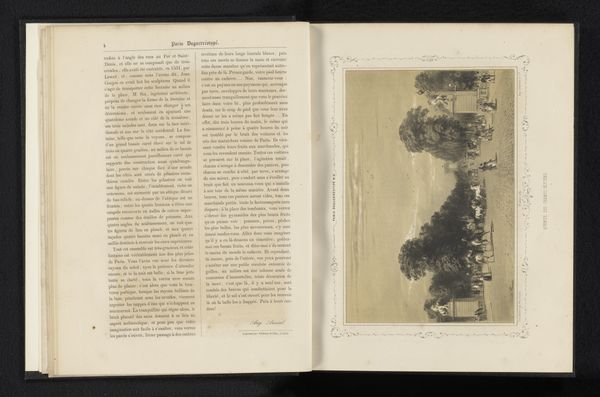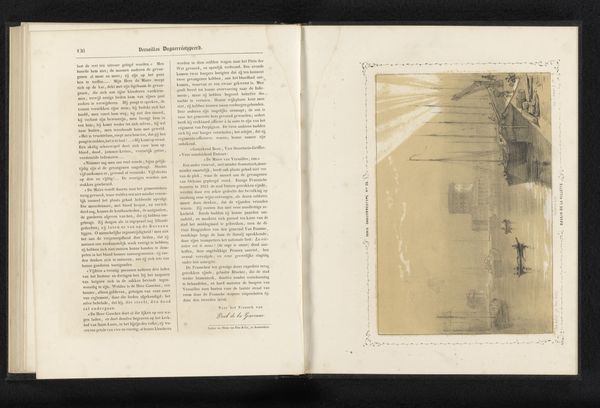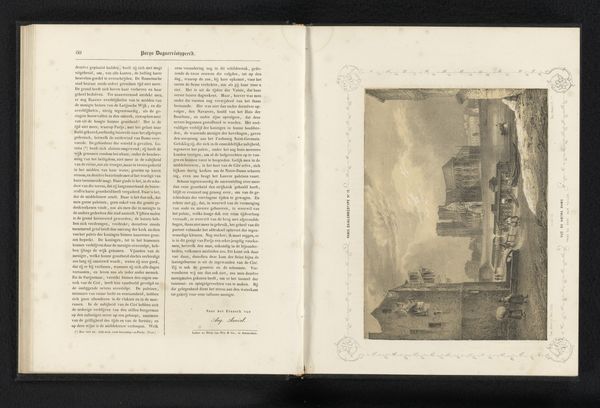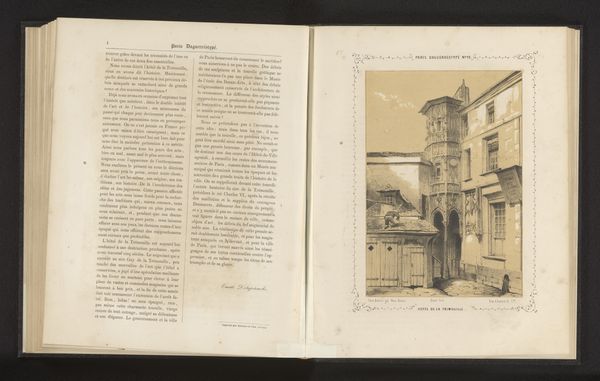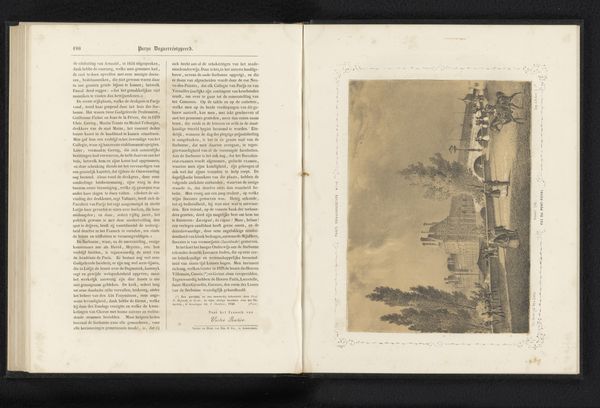
print, etching, engraving
# print
#
etching
#
landscape
#
romanticism
#
cityscape
#
academic-art
#
engraving
Dimensions: height 210 mm, width 260 mm
Copyright: Rijks Museum: Open Domain
This print depicting the Palais du Luxembourg was made by Édouard Auguste Nousveaux. Lithography, the printing process used here, involves drawing an image with a greasy crayon onto a flat stone or metal plate. The surface is then treated so that ink adheres only to the greasy areas, allowing the image to be printed. Look closely, and you'll notice the soft, almost chalky quality of the lines, a direct result of the crayon-like drawing. Lithography democratized image production in the 19th century, as it was much cheaper and faster than traditional engraving. The technique allowed for the relatively quick reproduction of images, meeting a growing demand for visual representations of landmarks, like this Palais du Luxembourg. Consider the labor involved: from quarrying the lithographic stone, to the skilled hand of the artist, to the printing process itself. Each stage reflects the industrializing world of the 19th century, where art and commerce were becoming ever more intertwined. The print exemplifies how "fine art" techniques were harnessed for mass production, blurring the lines between art, craft, and industry.
Comments
No comments
Be the first to comment and join the conversation on the ultimate creative platform.

